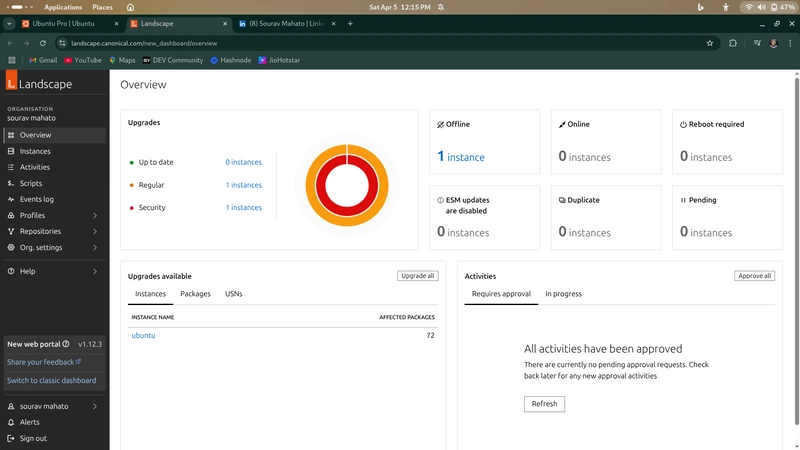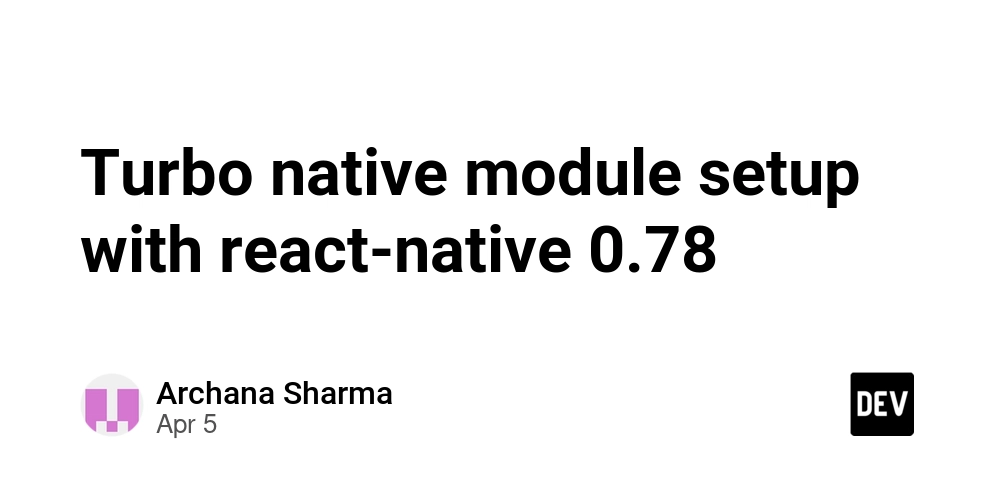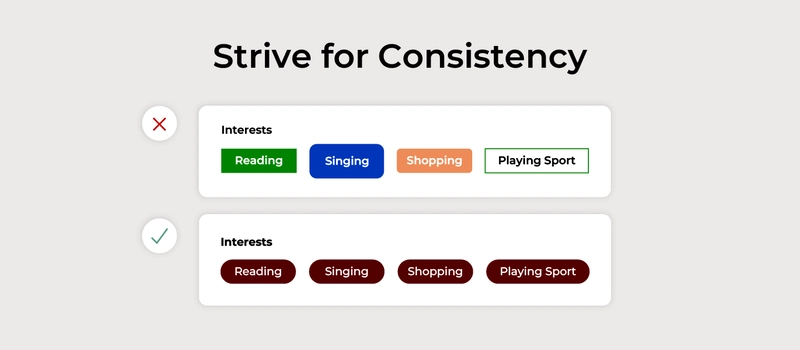You Probably Don't Know How to Write APIs Like This Using Express
You Probably Don't Know How to Write APIs Like This Using Express Discovering a Different Approach in n8n When I first dove into the n8n codebase while working on LiveAPI, I expected the usual Express setup: a single routes file importing other modules, each API route calling a controller, passing through a validator, and ending up in a service file. This is the standard way most Node.js backends are structured, like in FlowiseAI or NodeBB. But n8n? It completely flipped my expectations. Instead of the usual route-controller-service flow, n8n takes a more TypeScript-heavy, decorator-driven approach that feels more like NestJS than traditional Express. It was a refreshing surprise, and I thought, "Okay, let's talk about this." So, let's break down how n8n structures its API in a way that’s both different and powerful, leveraging decorators, metadata, and dependency injection. The Server.ts File: A Custom Express Setup The heart of n8n’s backend lies in its Server class, which extends an AbstractServer and sets up an Express-based API. This isn’t just a simple Express app with some routes slapped onto it. Instead, it Dynamically loads controllers: Based on environment settings, controllers for authentication (LDAP, SAML), source control, MFA, and more are loaded at runtime. Handles webhooks & real-time events: WebSockets, Prometheus monitoring, and caching are integrated. Uses middleware: Helmet, CSP, cookie parsing, and rate limiting are configured dynamically. Handles SPA & frontend asset handling: Routes are served alongside API endpoints. But the real magic happens in how API routes are structured. The Decorators: A Different Way to Define APIs n8n ditches the typical routes folder and instead relies on TypeScript decorators for definning API endpoints. This is where it starts to feel very NestJS-like. Check out route.ts: No Traditional Route Files – Just Decorators Route decorators define API methods dynamically: import type { RequestHandler } from 'express'; import { getRouteMetadata } from './controller.registry'; import type { Controller, Method, RateLimit } from './types'; const RouteFactory = (method: Method) => (path: `/${string}`, options: RouteOptions = {}): MethodDecorator => (target, handlerName) => { const routeMetadata = getRouteMetadata(target.constructor as Controller, String(handlerName)); routeMetadata.method = method; routeMetadata.path = path; routeMetadata.middlewares = options.middlewares ?? []; }; export const Get = RouteFactory('get'); export const Post = RouteFactory('post'); export const Put = RouteFactory('put'); export const Patch = RouteFactory('patch'); export const Delete = RouteFactory('delete'); This approach eliminates the need for explicit route definitions. Instead, every controller method gets decorated with @Get(), @Post(), etc., and n8n handles the routing internally. The RestController Magic Instead of defining an Express router manually, the @RestController decorator registers an entire controller: import { Service } from '@n8n/di'; import { getControllerMetadata } from './controller.registry'; import type { Controller } from './types'; export const RestController = (basePath: `/${string}` = '/'): ClassDecorator => (target) => { const metadata = getControllerMetadata(target as unknown as Controller); metadata.basePath = basePath; return Service()(target); }; This automatically registers the controller and maps its routes. Example: Active Workflows API The ActiveWorkflowsController (source) handles workflow-related API endpoints. import { Get, RestController } from '@/decorators'; import { ActiveWorkflowRequest } from '@/requests'; import { ActiveWorkflowsService } from '@/services/active-workflows.service'; @RestController('/active-workflows') export class ActiveWorkflowsController { constructor(private readonly activeWorkflowsService: ActiveWorkflowsService) {} @Get('/') async getActiveWorkflows(req: ActiveWorkflowRequest.GetAllActive) { return await this.activeWorkflowsService.getAllActiveIdsFor(req.user); } @Get('/error/:id') async getActivationError(req: ActiveWorkflowRequest.GetActivationError) { const { user, params: { id: workflowId } } = req; return await this.activeWorkflowsService.getActivationError(workflowId, user); } } Each API method is just a function inside a class, and decorators handle everything—route mapping, authentication, validation, and more. Service Layer: Dependency Injection & Database Access n8n uses dependency injection (@n8n/di) to manage its services. The ActiveWorkflowsService handles workflow-related operations: @Service() export class ActiveWorkflowsService { constructor( private readonly logger: Logger, private readon

You Probably Don't Know How to Write APIs Like This Using Express
Discovering a Different Approach in n8n
When I first dove into the n8n codebase while working on LiveAPI,
I expected the usual Express setup:
a single routes file importing other modules,
each API route calling a controller,
passing through a validator,
and ending up in a service file.
This is the standard way most Node.js backends are structured, like in FlowiseAI or NodeBB.
But n8n? It completely flipped my expectations.
Instead of the usual route-controller-service flow, n8n takes a more TypeScript-heavy, decorator-driven approach that feels more like NestJS than traditional Express.
It was a refreshing surprise, and I thought, "Okay, let's talk about this."
So, let's break down how n8n structures its API in a way that’s both different and powerful, leveraging decorators, metadata, and dependency injection.
The Server.ts File: A Custom Express Setup
The heart of n8n’s backend lies in its Server class, which extends an AbstractServer and sets up an Express-based API.
This isn’t just a simple Express app with some routes slapped onto it.
Instead, it
- Dynamically loads controllers: Based on environment settings, controllers for authentication (LDAP, SAML), source control, MFA, and more are loaded at runtime.
- Handles webhooks & real-time events: WebSockets, Prometheus monitoring, and caching are integrated.
- Uses middleware: Helmet, CSP, cookie parsing, and rate limiting are configured dynamically.
- Handles SPA & frontend asset handling: Routes are served alongside API endpoints.
But the real magic happens in how API routes are structured.
The Decorators: A Different Way to Define APIs
n8n ditches the typical routes folder and instead relies on TypeScript decorators for definning API endpoints.
This is where it starts to feel very NestJS-like. Check out route.ts:
No Traditional Route Files – Just Decorators
Route decorators define API methods dynamically:
import type { RequestHandler } from 'express';
import { getRouteMetadata } from './controller.registry';
import type { Controller, Method, RateLimit } from './types';
const RouteFactory =
(method: Method) =>
(path: `/${string}`, options: RouteOptions = {}): MethodDecorator =>
(target, handlerName) => {
const routeMetadata = getRouteMetadata(target.constructor as Controller, String(handlerName));
routeMetadata.method = method;
routeMetadata.path = path;
routeMetadata.middlewares = options.middlewares ?? [];
};
export const Get = RouteFactory('get');
export const Post = RouteFactory('post');
export const Put = RouteFactory('put');
export const Patch = RouteFactory('patch');
export const Delete = RouteFactory('delete');
This approach eliminates the need for explicit route definitions.
Instead, every controller method gets decorated with @Get(), @Post(), etc., and n8n handles the routing internally.
The RestController Magic
Instead of defining an Express router manually, the @RestController decorator registers an entire controller:
import { Service } from '@n8n/di';
import { getControllerMetadata } from './controller.registry';
import type { Controller } from './types';
export const RestController =
(basePath: `/${string}` = '/'): ClassDecorator =>
(target) => {
const metadata = getControllerMetadata(target as unknown as Controller);
metadata.basePath = basePath;
return Service()(target);
};
This automatically registers the controller and maps its routes.
Example: Active Workflows API
The ActiveWorkflowsController (source) handles workflow-related API endpoints.
import { Get, RestController } from '@/decorators';
import { ActiveWorkflowRequest } from '@/requests';
import { ActiveWorkflowsService } from '@/services/active-workflows.service';
@RestController('/active-workflows')
export class ActiveWorkflowsController {
constructor(private readonly activeWorkflowsService: ActiveWorkflowsService) {}
@Get('/')
async getActiveWorkflows(req: ActiveWorkflowRequest.GetAllActive) {
return await this.activeWorkflowsService.getAllActiveIdsFor(req.user);
}
@Get('/error/:id')
async getActivationError(req: ActiveWorkflowRequest.GetActivationError) {
const { user, params: { id: workflowId } } = req;
return await this.activeWorkflowsService.getActivationError(workflowId, user);
}
}
Each API method is just a function inside a class, and decorators handle everything—route mapping, authentication, validation, and more.
Service Layer: Dependency Injection & Database Access
n8n uses dependency injection (@n8n/di) to manage its services.
The ActiveWorkflowsService handles workflow-related operations:
@Service()
export class ActiveWorkflowsService {
constructor(
private readonly logger: Logger,
private readonly workflowRepository: WorkflowRepository,
private readonly sharedWorkflowRepository: SharedWorkflowRepository,
private readonly activationErrorsService: ActivationErrorsService,
) {}
async getAllActiveIdsFor(user: User) {
const activationErrors = await this.activationErrorsService.getAll();
const activeWorkflowIds = await this.workflowRepository.getActiveIds();
const hasFullAccess = user.hasGlobalScope('workflow:list');
if (hasFullAccess) {
return activeWorkflowIds.filter((workflowId) => !activationErrors[workflowId]);
}
const sharedWorkflowIds =
await this.sharedWorkflowRepository.getSharedWorkflowIds(activeWorkflowIds);
return sharedWorkflowIds.filter((workflowId) => !activationErrors[workflowId]);
}
}
This makes it easy to swap out implementations, mock dependencies in tests, and keep the code modular
Final Thoughts
If you’re coming from a standard Express.js background, n8n’s API structure might feel alien at first.
But once you get past the initial "where are the routes?" confusion, you'll understand how decorators handle routing, authentication, and middleware injection, it starts to make a lot of sense.
By using decorators and dependency injection, n8n manages to keep its API modular, maintainable, and easy to extend.
So, the next time you’re building an Express backend, maybe try throwing in some decorators.
Who knows? You might just like it.
If you're building any API-heavy application, it's worth considering this structure to your options bucket.
I’ve been actively working on a super-convenient tool called LiveAPI.
LiveAPI helps you get all your backend APIs documented in a few minutes
With LiveAPI, you can quickly generate interactive API documentation that allows users to execute APIs directly from the browser.
If you’re tired of manually creating docs for your APIs, this tool might just make your life easier.















































































